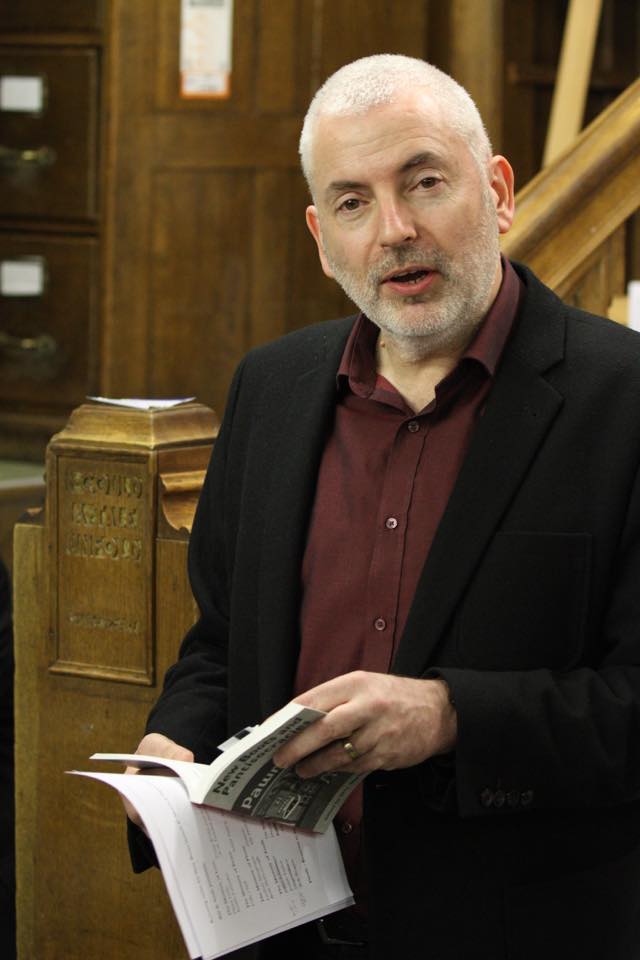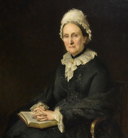
-
Celebrations begin to commemorate 50 years of the University of Dundee
2017 -
The University of Dundee becomes a fully independent institution under the terms of the Royal Charter.
1967 -
Ordinances issued in 1897 made University College form part of St Andrews. and establish a Faculty of Medicine.
1897 -
The Deed formally creating University College Dundee was signed by founders Miss Mary Ann Baxter and her cousin Dr John Boyd Baxter.
1881
Three Painters
-
date
Fri, 27 Oct 2017
-
Running Time
00:08:04
In any city with an art institution as prestigious and well-respected as the Duncan of Jordanstone College, creative pursuits are always likely to flourish.
Episode Transcript
In any city with an art institution as prestigious and well-respected as the Duncan of Jordanstone College, creative pursuits are always likely to flourish. Dundee has been a beacon of artistic expression and opportunity over many years, drawing in visual artists connected to the city through birth or study at what is now the Duncan of Jordanstone College of Art & Design.
An early example of the city kindling an unlikely artistic flame appears is the story of John Duncan. Duncan was born in the Hilltown in 1866 to a butcher and cattleman. However, the son had no interest in following in the father’s footsteps and by the age of 15 he was submitting cartoons to a local magazine and was soon employed as an assistant in the art department at the Dundee Advertiser. Whilst working, he was also a student at the old Dundee School of Art, then based at the High School of Dundee.
He moved to London and found work as a commercial illustrator, before travelling to the Antwerp Academy to study. In 1889 Duncan returned to Dundee where he exhibited work in the new Victoria Art Galleries extension of the Albert Institute. He became one of the founder members of the Dundee Graphic Arts Association (now Dundee Art Society) in 1890.
In 1892 Duncan moved to Edinburgh to work with Patrick Geddes, the famed sociologist, botanist and urbanist. Whilst there, he completed murals for Geddes's halls of residence at Ramsay Garden and was the artist for Geddes' magazine "The Evergreen". He was also director of Geddes's Old Edinburgh School of Art.
Around 1897, whilst exhibiting in various nationwide illustrious galleries, Duncan painted The Glaive of Light which is now in the University of Dundee's collection. He taught Art and Design in Dundee and also began Dundee's first design collective.
Perhaps the best-known Dundee-based artist of the last hundred years is James McIntosh Patrick. His paintings adorn the walls of many a Dundee home, and also those of people who have left the city but seek an artistic reminder of its changing face. His work is perhaps the most popular expression of the city’s representation of itself.
McIntosh Patrick was born in Dundee in 1907 and in 1924 he began studying painting at Glasgow School of Art. He is now regarded as arguably the finest British landscape painter of the 20th century, but at the outset of his career, he concentrated on etchings, only developed his talents for painting in the 1930s. McIntosh Patrick painted portraits and landscapes but is most widely known for his portrayals of the Scottish countryside, and those familiar Tay landscapes captured from his studio overlooking Magdalen Green.
His work can be seen in galleries all over Scotland and as far afield as South Africa, Australia and the United States. In 1999 McIntosh Patrick’s archives were donated to the Scottish National Gallery of Modern Art.
Very different in style to James McIntosh Patrick but no less distinctive was Alberto Morrocco. Morrocco was born in Aberdeen in 1917 to Italian immigrant parents. He studied at Gray's School of Art between 1932 and 1938, and also in France, Italy and Switzerland. Unfortunately, during the outbreak of the Second World War, Morrocco was detained in Edinburgh Castle as an internee, but he was eventually released and served in the Royal Army Medical Corps, despite being a conscientious objector.
From 1950 Morrocco was Head of the School of Painting at the Duncan of Jordanstone College of Art. Morrocco painted portraits of all the University of Dundee’s Principals and, in 1977, the Queen Mother, then Chancellor of the University, also sat for him. In 1980 he was awarded an honorary doctorate by the University. He was also awarded many other prizes including the Guthrie Award and the Carnegie Award of the Royal Scottish Academy, where he was elected Fellow in 1962 and made an OBE in 1993.
The Duncan of Jordanstone College of Art and Design stands today as the creative hub of the University of Dundee and of the City itself, supporting new artists and helping them to develop and perfect their art. The Dundee Degree Show is one of the biggest in the UK, with more than 15,000 visitors each year. The College also supports challenging and innovative practices and critical discourse in contemporary art, design and visual culture. There are four devoted gallery spaces, including the Cooper Gallery, each of which provides a space to feature original and creative methods, and contribute to dissemination of best practices of nationally- and internationally-recognised artists, designers, writers and creative thinkers.
Opened in 2014, LifeSpace is a perfect example of a future that has already arrived – the mission of LifeSpace is to engage artists and scientists in exciting new collaborations across traditional academic boundaries. The aim is to provide both the artistic and the scientific communities, as well as the public, with greater insight into the broad spectrum of life sciences research. This unique gallery space is curated as a collaborative partnership between researchers from Duncan of Jordanstone College of Art and Design and researchers from the School of Life Sciences, and it operates at the boundary between academic and artistic disciplines to show how one can inform, enhance and ultimately transform the other. Neither art nor science ever stand still, and LifeSpace at Dundee University shows how the two disciplines can travel together to places that neither discipline could go on their own.
Andy Jackson

Andy Jackson is the University’s Learning & Teaching Librarian, based in the Library & Learning Centre. Outside of Dundee University, he has published two collections of poetry including A Beginner’s Guide to Cheating (2015) and is editor of six poetry anthologies including Whaleback City: the poetry of Dundee and its hinterland in 2013 (with Dundee city Makar W.N. Herbert). He is currently Makar to the Federation of Writers Scotland.
-
Celebrations begin to commemorate 50 years of the University of Dundee
2017 -
The University of Dundee becomes a fully independent institution under the terms of the Royal Charter.
 1967
1967 -
Ordinances issued in 1897 made University College form part of St Andrews. and establish a Faculty of Medicine.
1897 -
The Deed formally creating University College Dundee was signed by founders Miss Mary Ann Baxter and her cousin Dr John Boyd Baxter.
 1881
1881